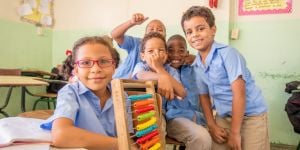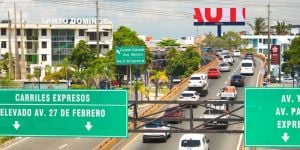COVID-19
Last activity 21 June 2022 by ducketts
7427 Views
3271 replies
Subscribe to the topic
Post new topic
Right now have to watch the non mrna vaccines...
U.S. health officials are recommending a "pause" in administration of the single-dose Johnson & Johnson COVID-19 vaccine to investigate reports of potentially dangerous blood clots.
More than 6.8 million doses of the J&J vaccine have been administered in the U.S., the vast majority with no or mild side effects. But in a joint statement Tuesday, the Centers for Disease Control and Prevention and the Food and Drug Administration said they were investigating unusual clots in six women that occurred six to 13 days after vaccination.
The clots occurred in veins that drain blood from the brain and occurred together with low platelets. All six cases were in women between the ages of 18 and 48.
The reports appear similar to a rare, unusual type of clotting disorder that European authorities say is possibly linked to another COVID-19 vaccine not yet cleared in the U.S., from AstraZeneca.
U.S. federal distribution channels, including mass vaccination sites, will pause the use of the J&J shot, and states and other providers are expected to follow. The other two authorized vaccines, from Moderna and Pfizer, make up the vast share of COVID-19 shots administered in the U.S. and are not affected by the pause.
The single-dose vaccine has been approved in Canada, but the country has not yet received any doses.
'Abundance of caution'
The CDC's Advisory Committee on Immunization Practices will meet Wednesday to discuss the cases and the FDA has also launched an investigation into the cause of the clots and low platelet counts.
"Until that process is complete, we are recommending a pause in the use of this vaccine out of an abundance of caution," Dr. Anne Schuchat, principal deputy director of the CDC, and Dr. Peter Marks, director of the FDA's Center for Biologics Evaluation and Research, said in a joint statement.
They are recommending that people who were given the J&J vaccine who are experiencing severe headache, abdominal pain, leg pain, or shortness of breath within three weeks after receiving the shot contact their health-care provider.
U.S. health authorities cautioned doctors against using a typical clot treatment, the blood-thinner heparin. "In this setting, administration of heparin may be dangerous and alternative treatments need to be given," the FDA and CDC said.
European authorities investigating the AstraZeneca cases have concluded clots appear to be similar to a very rare abnormal immune response that sometimes strikes people treated with heparin, leading to a temporary clotting disorder.
Officials say they also want to educate vaccine providers and health professionals about the "unique treatment" required for this type of clot.
Johnson & Johnson said it was aware of the reports of "thromboembolic events," or blood clots, but that no link to its vaccine had been established.
"We are aware that thromboembolic events including those with thrombocytopenia have been reported with COVID-19 vaccines," said Johnson & Johnson in a statement. "At present, no clear causal relationship has been established between these rare events and the Janssen COVID-19 vaccine."
Single-dose vaccine
The J&J vaccine received emergency use authorization from the FDA in late February with great fanfare, with hopes that its single-dose and relatively simple storage requirements would speed vaccinations across the country. Yet the shot only makes up a small fraction of the doses administered in the U.S. as J&J has been plagued by production delays and manufacturing errors at the Baltimore plant of a contractor.
Last week, the drugmaker took over the facility to scale up production in hopes of meeting its commitment to the U.S. government of providing about 100 million doses by the end of May.
Only about nine million of the company's doses have been delivered to states and are awaiting administration, according to CDC data.
Until now, concern about the unusual blood clots has centred on the vaccine from AstraZeneca, which has not yet received authorization in the U.S. Last week, European regulators said they found a possible link between the shots and a very rare type of blood clot that occurs together with low blood platelets, one that seems to occur more in younger people.
The European Medicines Agency stressed that the benefits of receiving the vaccine outweigh the risks for most people. But several countries, including Canada, have revised their recommendation around who should receive the vaccine.
The J&J and AstraZeneca vaccines are made with the same technology. Leading COVID-19 vaccines train the body to recognize the spike protein that coats the outer surface of the coronavirus. But the J&J and AstraZeneca vaccines use a cold virus, called an adenovirus, to carry the spike gene into the body.
J&J uses a human adenovirus to create its vaccine while AstraZeneca uses a chimpanzee version.
https://www.cbc.ca/news/world/johnson-a … -1.5985110
Abinader extends the curfew until May 16 with the same schedule
https://listindiario.com/la-republica/2 … mo-horario
President Luis Abinader established the validity of the current curfew until May 16, in a decree issued this Thursday morning.
Through Decree 231-21, signed last Wednesday but released by the Presidency today, the president kept the current curfew schedule in force from tomorrow, Friday, April 16, until May 16.
The current curfew time is Monday through Friday from 9:00 at night to 5:00 in the morning, with a grace period of 3 hours to circulate. In the case of weekends, the curfew begins at 7:00 at night, with the same grace of 3 hours to circulate. It also ends at 5:00 in the morning.
The Dominican Government took this measure after the National Congress approved a new state of emergency for another 45 days.
Pfizer CEO says third Covid vaccine dose likely needed within 12 months
Pfizer CEO Albert Bourla said people will “likely” need a third dose of a Covid-19 vaccine within 12 months of getting fully vaccinated. His comments were made public Thursday but were taped April 1.
He also said it’s possible people will need to get vaccinated against the coronavirus annually.
“It is extremely important to suppress the pool of people that can be susceptible to the virus,” he told CNBC’s Bertha Coombs during an event with CVS Health. He added the vaccines will be an important tool in the fight against highly contagious variants.
The comment comes after Johnson & Johnson CEO Alex Gorsky told CNBC in February that people may need to get vaccinated against Covid-19 annually, just like seasonal flu shots.
Researchers still don’t know how long protection against the virus lasts once someone has been fully vaccinated.
Pfizer said earlier this month that its Covid-19 vaccine was more than 91% effective at protecting against Covid and more than 95% effective against severe disease up to six months after the second dose. Moderna’s vaccine, which uses technology similar to Pfizer’s, was also shown to be highly effective at six months.
Pfizer’s data was based on more than 12,000 vaccinated participants. However, researchers say more data is still needed to determine whether protection lasts after six months.
Earlier Thursday, the Biden administration’s Covid response chief science officer David Kessler said Americans should expect to receive booster shots to protect against coronavirus variants.
Kessler told U.S. lawmakers that currently authorized vaccines are highly protective but noted new variants could “challenge” the effectiveness of the shots.
“We don’t know everything at this moment,” he told the House Select Subcommittee on the Coronavirus Crisis.
“We are studying the durability of the antibody response,” he said. “It seems strong but there is some waning of that and no doubt the variants challenge ... they make these vaccines work harder. So I think for planning purposes, planning purposes only, I think we should expect that we may have to boost.”
In February, Pfizer and BioNTech said they were testing a third dose of their Covid-19 vaccine to better understand the immune response against new variants of the virus.
Late last month, the National Institutes of Health started testing a new vaccine from Moderna designed to protect against a problematic variant first found in South Africa.
Moderna CEO Stephane Bancel told CNBC on Wednesday that the company hopes to have a booster shot for its two-dose vaccine available in the fall.
The battle against covid19 is being lost as new cases are rising woldwide and new more dangerous variants are appearing which affect all age groups.
Until and if ever the virus is controlled worldwide, more and more variants will appear especially in countries with heavy virus caseloads. But already the controls are being ignored and relaxed so it probabaly it wont get better in most countries even with vaccination uptake. But vaccine availablity on a worldwide basis is slow and irregular with varying outcomes.
Regular vaccination will become the norm with vaccines being developed to address the new variants and prop up immunity defences.
Indian double mutation variant arrives in Britain and has 'hallmarks of very dangerous virus'
https://news.sky.com/story/covid-19-ind … s-12276922
I can't see how vaccination certification or other border controls such as quaratine and testing will not become the norm.
The econonomic damage is worrying. DR is feeling the pinch and subsidised covid testing may be no more soon. Testing costs a mint as does vaccination and the cost of medical care. Somebody has got to pay for these massive costs and debts countries have and will continue to incur and the taxpayer looks the likely target.
Yes, I am pessamistic and have moulded my future in DR accordingly.
Tend to agree but right now otherwise..
According to a new report from CheapOair
Punta Cana registers great demand of American travelers for the summer
April 16, 2021
Leave a comment
Punta Cana is experiencing strong demand for summer travel among American travelers, according to a new report from CheapOair.
The online travel agency indicated that Punta Cana, the Dominican Republic's travel hub, is experiencing considerable demand, placing the country as one of the main hubs of tourism in the Caribbean.
And it is not for less, since the Punta Cana airport concentrates more than half of the reservations made to date to arrive in the second quarter of the year, informed the Minister of Tourism, David Collado.
The positive performance of air ticket reservations is compounded by the favorable behavior shown by the index of short and long-term room reservations per night in all areas of the country, where the volume of room sales per night for stays in the In the next 30 days, it has reached all-time highs for Punta Cana.
On its side, Cancun also stands out as a Caribbean vacation destination among its US traveler base and the third most popular destination overall after Miami and Las Vegas.
“According to data from the Transportation Security Administration, passengers passing through US airports in March consistently exceed one million per day. That's a significant increase from just a month ago and demonstrates America's growing willingness to travel, ”said Sam Jain, CEO of CheapOair's parent company, Fareportal.
Both destinations, according to the report, are seeing a high demand from couples, who represent 63% of all reservations for the Caribbean destination in the summer, while individual travelers comprise 15% of reservations.
There is not a great deal of choice to travel easily without tough controls.
DR and Mexico have made it easy to travel. For DR this is perhaps in part good news.
The downside is that there are about 4k Brazileans not to mention other South American visitors coming here every month now with no proper checks, so DR will import the variants. And then export them too - a PCR test will not pick up a very recent infection.
It's nuts right now imo.
No global plan and so much news on vaccines, which by and large is negative, and people are now discouraged to take what is available and necessary because it is imperfect.
And DR like most countries is getting no vaccines so no vaccination opportunity is available to those that want it.
And the virus is spreading like wildfire again in most parts of the world and is the perfect situation for mutating.
DR is bobbling along consistently with positivity rates daily over 10%, more than 38k active cases, a few hundred in ICU, and a hundred on ventilators and most people don't care anymore - until it hits home.
I agree. DR is a ticking time bomb. And it will spread quicker with deadlier results as variants affect younger people more. It’s only a matter of when. But there are some mitigating factors. Many of the tourists are now travelling after vaccination. True, vaccines are not 100% effective especially against variants but it helps. Also true is that many will receive tests before they leave their home country because they want to know they can return without Covid. Hopefully, they are older travellers coming who are not coming to party as they do in Mexico. I’m on the north coast and fortunately the sex trade is significantly less than it has been. There are much fewer flights to POP. I suspect that’s one of the reasons DR has fewer cases. I also hope that the pandemic has changed the way people travel; at least for awhile.
A lot can happen in a day!
Government changes curfew hours
The modification will take effect from next Monday
https://www.diariolibre.com/actualidad/ … KG25678255
The President of the Republic, Luis Abinader, relaxed the curfew in the country, which will be in force from 10:00 p.m. to 5:00 a.m., Monday through Friday.
According to decree 253-21, on weekends the curfew will be from 9:00 pm to 5:00 am
Does anyone know where to obtain a PCR test in Las Terrenas prior to flying out ?
I suggest that it most certainly NOT time to throw in the towel.
1. I have friends who literally still believe the entire COVID thing is a complete hoax. They're wrong.
>> I do believe most politicians way over-reacted, and some are still over-reacting, such as the silly US states keeping schools closed, despite clear evidence they can be opened safely. (If untested illegal immigrant children can be safely schooled, so can the legal children.)
2. I've watched as certain political parties--who I needn't mention here--went way overboard on the responses to COVID. Clearly, they needed a crisis, and made use of the closest event they could find to help drive certain social changes and events.
Nonetheless, doom isn't in the cards. Not for COVID-19, anyway.
Take a deep breath -- though obviously not while in a roomful of COVID-19 patients -- and chill a bit.
We don't need COVID-19 or COVID-XX travel docs.
Have some faith in the common sense of ordinary people. They'll figure it out.
We recently completed a Caribbean trip through Panama and the DR. Five different airline flights and dozens of hours spent in airports. Shopping mall and restaurant visits.
>> Reasonable precautions taken by businesses and individuals seemed to work quite well.
>> Not being stupid seems to be the primary criterion for avoiding COVID infection.
I want to make clear: COVID is very real.
>> I've now lost two friends to it...both well into their 70s.
>> I've had multiple adult children come down with it...two of those with pretty severe "long-haul" cases.
>> COVID long-haul isn't pretty.
>> I'm well-versed in the physical impacts of COVID-19, especially the long-haul variant. No rose-colored glasses here folks.
But, COVID-19 is NOT NOT NOT the end of the world as we know it.
We'll adjust...heck, weve already adjusted a lot.
If the much-ballyhooed vaccines aren't doing the job, better vaccines will be developed.
>> Some vaccines seem to be killing via blood clotting -- they will be cleared, improved or banned. Life will go on.
>> Some vaccines are very far from being effective -- notably, the CCCP vaccines. Hopefully, those vaccines will be driven from the market...then perhaps improved and re-released.
Going nuts with society-wide restrictions aren't needed and sometimes counterproductive.
>> Quarantines and isolation also kill people-- you just shift the deaths into different columns.
>> Masks are a great voluntary option -- my wife and I still wear masks in public and most private social settings. However, masks are horrible as a society-wide mandate.
We will get through this.
Take care of yourself and your family, then help your friends, neighbors and community.
COVID-19 is NOT NOT NOT the Spanish Flu, and most certainly not the Black Death.
Patience, my friends, patience
It will all work out.
Jim
Last week saw highest ever level of global COVID cases over 7-day period
https://fox59.com/news/coronavirus/last … ay-period/
The pandemic’s not over yet.
Last week, the World Health Organization reported the highest number of COVID cases in the world in a single week ever, at 5.2 million new cases.
The news comes as half of Americans have received at least the first dose of the COVID vaccine.
Dr. Tedros Adhanom Ghebreyesus, the director-general of WHO announced the stark findings in a media briefing Monday.
He said deaths rose for the fifth straight week, adding that now more than 3 million people have died from COVID worldwide.
Ghebreyesus also said infections and hospitalizations among those aged 25 to 59 “are increasing at an alarming rate.” It’s possible the uptick is the result of variants and “increased social mixing among younger adults.”
The latest bulletins on covid19 for DR show day positivities in the mid teens - yesterday just under 19% and today just under 15% with the 4 week average increasing again and so too the active cases which are at just under 40k. Most cases reported are in the capital.
UCI occupancy and ventilator use is increasing again.
Maybe the variants are beginning to show up here?
The government is trying to balance economic opening up with a steady case load of virus which is mutating and affecting younger people now with less adherence to basic sanitary controls and shorter curfew and less provincial testing.
A time bomb - perhaps?
MODERNA CEO BANCEL SAYS BY NEXT YEAR THERE WILL BE TOO MUCH COVID VACCINE PRODUCTION CAPACITY IN THE WORLD.
Which makes you wonder why you aren't hearing more about DR ordering or having more available....
Another wave of covid19 is beginning?
Throughout this week the positivity has been climbing with mid to upper teen numbers. The 4 week average is back to close to 11% and a number of regions are now posting higher prositivity rates. active cases are climbing again.
Against this background the curfew has been relaxed and the virus variants are probaably amongst us.
ICU beds are filled in private clinics
Private health centers are full of patients with the virus
https://listindiario.com/la-republica/2 … s-privadas
The main private sector health centers in the National District are receiving a large number of patients affected by Covid-19 in recent days, so they are operating at full capacity. A report by the researcher Alicia Ortega in the SIN News broadcast revealed that the Abreu, Cedimat and Hospiten Clinic operate with 100% bed occupancy to treat the coronavirus, while the Cruz Jiminián Clinic has 40% bed occupancy, the Dominican-Cuban Center is at 60% and the Plaza de la Salud at 80%.
Regarding the Intensive Care Units (ICU), Abreu and Cruz Jiminián were already at full capacity, Cedimat, Dominico-Cubano and Plaza de la Salud reached 80% or more occupancy of these critical patient care spaces .
After an investigation on the subject, Listín Diario obtained statistics from the Health authorities that reveal that the private sector in the National District is close to half the occupation of Covid beds, ICUs are at 24% and ventilators at 31% .
In the province of Santo Domingo, ICUs are the ones with the highest demand, since of the 26 ventilators in the entire private sector, 13 are in use, equivalent to 45%.
In the particular case of Cedimat, the medical center woke up with only one free bed to receive a patient affected by the virus and the ICUs completely full.
Cedimat has seven fans, of which four are in use, for 57%.
The Intensive Care Unit of the Cruz Jiminián clinic is at its maximum capacity.
lennoxnev wrote:Another wave of covid19 is beginning?
Throughout this week the positivity has been climbing with mid to upper teen numbers. The 4 week average is back to close to 11% and a number of regions are now posting higher prositivity rates. active cases are climbing again.
Against this background the curfew has been relaxed and the virus variants are probaably amongst us.
Mm
Seems the whole world is seeing a resurgence
Wall Street Journal
Covid-19 Is Still Raging in Much of the World as Global Cases Hit Record Highs
Yes-however in the UK it's been going for weeks. I guess it's a combination of lock-down and 44 m people having been vaccinated.
A couple of extracts from the WSJ article says it all:-
New variants, pandemic fatigue and easing of lockdowns have virus surging in many countries
“There’s this feeling that, we have the vaccine, so it’s over,” said Devi Sridhar, professor of global public health at the University of Edinburgh in Scotland. “There’s still a long way for this pandemic to run.”
It still has a long way to run says he in a country with 44 million vaccinated, says that for the rest of us it has a very very very long way to run.
My worry is that P1 is here in DR and spreading;-
Brazil’s ‘rapid and violent’ Covid variant devastates Latin America
https://www.theguardian.com/world/2021/ … in-america
As a coronavirus variant traced to the Brazilian Amazon marauded through Peru’s coastal capital last month, Rommel Heredia raced to his local hospital to seek help for his brother, mother and father.
“I said goodbye and promised I’d come back to take them home,” said the 47-year-old PE teacher, his voice muffled by two black masks pulled tightly over his face.
Heredia was unable to fulfil his pledge. Three days later, his 52-year-old brother, Juan Carlos, died as he waited for a bed in intensive care at the Rebagliati public hospital in Lima. The next day he lost his 80-year-old mother, Vilma, who suffered a fatal brain inflammation doctors blamed on Covid-19. Four days later his father, Jorge, passed away.
“The truth is, the pain’s just too great. I can’t come to terms with it,” Heredia said on Sunday as Peru suffered its heaviest day of Covid losses and fears mounted over how new variants might have rejuvenated the pandemic that has already killed more than 3 million people worldwide.
Similar sentiments of incredulity and despair are being voiced across Latin America as the apparently more contagious P1 variant linked to Brazil makes an already shattering Covid crisis somehow even worse. Nearly 1 million Latin American lives have been lost here since the region’s first Covid case was detected in February 2020, and the pandemic is now accelerating again in countries including Argentina, Bolivia, Peru, Venezuela and Uruguay, with many convinced the Brazilian variant bears much of the blame.
“The Brazilian variant has reached virtually all regions,” Peru’s health minister, Óscar Ugarte, warned in early April as his country was plunged into the most deadly phase of what was already one of the worst outbreaks on Earth.
Ester Sabino, a Brazilian scientist who is tracking the P1 variant’s spread, said phylogenic analysis suggested it had emerged in the second half of November somewhere near Manaus, a sultry riverside metropolis in Brazil’s Amazon. Weeks later, Manaus made global headlines after its hospitals were overwhelmed by a sudden deluge of patients for which they were catastrophically unprepared. “What we’re watching is a complete massacre,” one local health worker told the Guardian at the time, as hospitals ran out of oxygen and patients asphyxiated.
Until Manaus’s collapse, which coincided with the emergence of similar variants in England and South Africa, Sabino had been hopeful Brazil’s outbreak might gradually be brought under control in 2021, as vaccination gained pace. But authorities failed to isolate the city and stop the variant spreading.
By February, Araraquara, a city 1,500 miles south in São Paulo state, had been forced into lockdown by an explosion of infections linked to P1. Hospitals across Brazil reported being inundated with Covid patients, many disturbingly young, and Brazil’s death toll nearly doubled, from just over 195,000 at the start of January to 380,000 now. By March, the variant, which has now been detected in eight South American countries, was invading Brazil’s neighbours, too: sweeping west into the Peruvian Amazon, leapfrogging the Andes, and laying siege to Lima, more than 1,300 miles to Manaus’s south-west.
“It’s not just a much more contagious variant but it also increases the levels of reinfection, which reduces the efficacy of vaccines,” said Antonio Quispe, a Peruvian epidemiologist who said P1’s “rapid and violent” spread was dire news for the region.
With fears over how some new variants might dodge vaccine protection, governments have tightened travel restrictions and closed borders. France recently suspended all flights to Brazil as a result of what the prime minister, Jean Castex, called its “absolutely dramatic” epidemic.
“The Europeans are right to be afraid about what is happening in Brazil,” said Marcos Boulos, an infectious disease specialist from the University of São Paulo who said uncontrolled outbreaks such as Brazil’s provided the ideal breeding grounds for variants. “The more transmission there is, the more variants appear … The situation is very, very serious,” Boulos said.
This week the British government added India – which is witnessing a ferocious surge in cases – to its travel red list amid growing concern over the B.1.617 variant found there. A world record 314,835 infections were reported there on Thursday, with the prime minister, Narendra Modi, comparing the crisis to a storm.
Miguel Nicolelis, a Brazilian scientist who has become one of the most outspoken critics of president Jair Bolsonaro’s denialist Covid response, said government inaction had helped turn Latin America’s most populous nation into a global coronavirus threat. “Brazil is like a brewery and it’s brewing variants left, right and centre,” Nicolelis said, warning that while some mutations might hamper the virus’s ability to spread, others might could make it even more transmissible or lethal.
Nicolelis said the situation in India, which has 1.3 billion citizens, a population nearly seven times larger than Brazil’s, was even more troubling. “Things can happen even faster there. They are paving the way for an explosion of mutations … It’s frightening,” he said, calling for a global strategy of vaccination and sequencing to tackle the problem.
“Countries like Brazil and India can’t just be treated as global pariahs and abandoned. They need to be helped – because it’s not just their problem, it is the world’s,” Nicolelis said, adding that a similar lack of Covid control had also spawned the B117 variant in the UK.
Heredia was not sure which variant had been responsible for killing his family, although the government has said 40% of cases in Lima are now linked to P1. But he had no doubts over the scale of the calamity gripping his country, where a record 433 deaths last Sunday took Peru’s official total to more than 57,000.
“There are 30 patients [in the queue for ICU] before your brother and they’re prioritising younger patients,” Heredia recalled a doctor telling him after his sibling was admitted on the third Friday of March. Juan Carlos never made it out of the emergency ward, where he died three days later from pneumonia and pneumothorax complications.
“People are dying because they can’t get ICU beds,” Heredia said. “This is like war”.
Yes for the reason tourists from South America are arriving here in increasing numbers and P1 would dominate once established:-
South American tourism, in full rebound in the Dominican Republic despite third wave of Covid
https://www.arecoa.com/destinos/2021/04 … ola-covid/
While in South America a new wave of Covid-19 is being fought against the strain originating in Brazil , in the Dominican Republic , between January and February of this year, 36,990 visitors from this region arrived at the various airports in the country.
From Brazil, where P.1 emerged as the new variant of the Coronavirus and which can be up to two times more transmissible, 3,820 visitors were received in the first two months of the year, according to statistics from Dominican Airports Siglo XXI ( Aerodom ).
Brazil, as of April 10, 2021, had registered 71,832 new cases.
The country of origin where the most passengers were received in the first two months of the year was Colombia with 9,791 foreigners. In this South American nation, as of April 10, 14,509 new cases of Coronavirus were registered.
From Argentina , which as of April 10 had reported 19,419 new cases of the virus, 6,585 passengers were received between January and February of this year.
Another of the countries in which Covid-19 is on the rise is Chile , registering 8,101 new cases of the virus two days ago, and from that country 5,112 foreign visitors arrived in the DR in the first two months of 2021, according to Listín Diario.
From Venezuela , 5,949 foreigners arrived in that period; from Peru there were 2,165 and from Ecuador the arrival of 1,446 tourists was registered.
When presenting the new cases registered in these countries and the arrival of passengers from South America, it should be remembered that the Dominican Republic is not requiring a mandatory PCR test at airports, but that breath tests are carried out at random.
On April 8, the director of the Pan American Health Organization ( PAHO ), Carissa Etienne , said that South America is the region of most concern in Covid-19 infections, as cases are increasing in almost all countries.
Despite the PAHO warnings, the Las Américas International Airport ( AILA ) has seven flights scheduled from South America for the week of April 12 to 25, four from Colombia and three from Venezuela and from Panama, the country where they operate. Some of the visitors to this region stop over, there are 12 flights in the program.
From April 26 to June 6 there are 58 scheduled flights from Colombia and Venezuela and 94 from Panama.
Many countries and some airlines are restricting travel from South American countries but not DR.
Public Health Concern for Increases in Critical Cases of COVID-19 in Young People
They suggest a quick meeting of the Health Cabinet to assess the situation and determine if new restrictions are adopted
https://www.diariolibre.com/actualidad/ … MO25907685
Three specialists from the Ministry of Public Health expressed concern about the high incidence of COVID-19 cases that is being experienced in young people , who are arriving at health centers with critical health complications due to the disease.
The increase occurs at a time when the Dominican Republic shows an upward trend in indicators of positivity, incidence and spread of cases, which leads the authorities to closely assess the situation, prior to recommending more restrictive measures to the population.
Gathered at the headquarters of the Ministry, in the customary press conference on Wednesdays, both the director of Epidemiology, Ronalds Skewes, the adviser to the Ministry, Eddy Pérez Then and the pulmonologist Natalia García Batista, warned about the increase and called the population not to neglect hygiene measures.
The average age of those who are being infected is 38 years, with a range of 42 to 48. "That is a decrease of almost eleven percent, which is something quite significant, in an average time of 15 weeks", said Skewes, who also referred to an increase in COVID positivity in the last four weeks, standing to date at 11.56%.
He also pointed out that the incidence that had been decreasing during the year, in recent weeks has remained stable, reaching 23.8 in seven days, however, he defended that the national level is low compared to what happens in other countries in the region .
The most worrying thing, he said, is the case of young people. "We are observing it, we are concerned and we must follow up on these types of cases," he said.
Dr. García Batista, in turn, indicated that the COVID units are currently managing patients between 26 and 42 years old, which is the population that is more on the streets, sharing indiscriminately in public places.
He pointed out that young people are presenting very aggressive inflammatory responses, and they arrive up to ten days after the symptoms, due to the confidence they have that they will be able to resist the virus.
“We are very concerned about the increase in incidence in the younger groups. It is something that really worries us a lot. It has always been thought, and it is one of the things that we have been accepting, that the youngest are not the most vulnerable, but it does not seem that this is what is happening, ”Pérez Then said in turn.
The adviser to the Ministry of Health recalled that COVID-19 is not only complicated at the time it is suffered, but several months later, especially with cardiovascular and neurological conditions , so the best thing that can happen to the person is not catch.
He reported that the R0, which refers to the ability to infect others that a sick person has, is at 2.19, which shows the mobility and increase in the transmission rate. He said that, although the increase does not reach the point of stress levels, they prefer not to reach the red alert level to make a call to the population.
“A quick meeting must be held with the Health Cabinet to evaluate these results of these indicators that have been presented ... there is information that must be assessed, that must be evaluated, and we have to come up with a quick guideline that responds to what we are living, ”he said.
It doesn't surprise me. DR is like most of the rest of the world and not immune to the new mutations and perhaps P1 is here. The government can act now or it will have to act more strongly later imo. It should reverse the weekend curfew time to 7pm at the very least imo.
Last weekend the people celebrated as though the crisis was over with the more relaxed curfew. Outside the cities sanitary measures are almost non existent.
And DR is running out of PCR tests which has reflected on lower case numbers in the last few days yet positivity is on the increase. An R factor of over 2 is mentioned in the article.
Simply a continuation of what has been going on all along.
It was a political decision to relax the curfew - at the wrong time.
As has been the case in the past, the situation will deteriorate in the coming days and weeks and the governement will have no choice but to act decisively with a tougher curfew again for a long period until numbers drop again.
The level of testing is low now, and the positivity has been creeping back up to 15% in the major cities and there is no clear picture elsewhere. The ICU and ventilator numbers are rising daily again and private hospitals and clinics are filling up.
If P1 is here this could explode just like it has in most of Latin America.
Agreed 100%. And if all the travel testing is taken out of this equation our positivity rate is very high! There is little active testing that is non tourism related.
The day positivity reported for yesterday was up to 24.6%.
https://eldia.com.do/salud-publica-repo … vos-casos/
We are now beyond the Easter effect and testing numbers are low.
Are we going the way of the rest of Latin America?
Some good news - more Sinovac vaccine is coming soon apparently and over 50s can get vaccinated. And both EMA and WHO are reviewing approval for emergency use of Sinovac this week.
https://www.coastreporter.net/world-new … ne-3747380
They have relaxed far too much and now we see the consequences.
P1?
We are in the dark due to inadequate genomic testing here.
But a sign of P1 is increasing positivity and younger people being infected and in ICU and on ventilators.
https://www.google.com/search?q=Dominic … amp;uact=5 Deaths are low at least..
Not a surprise with such a young population (only 6% over 65 compared to high teens in EU and USA.)
If P1 becomes dominant that will change as younger people get serious infection and die. As we see in South America now.
I agree there’s a potential problem but I don’t think we can conclude much from the positivity rate alone. Especially short term. It’s about trends. Total cases appear to be declining slightly. The curve is slightly downward. It will likely go up in the future but I’m not convinced yet that time is now.
Check the MOH daily Bulletins.
The positivity has been trending upwards as the level of testing daily drops. No surprise with less cases reported because there has been less testing.
The other worrying trends are private hospital and clinic occupancy, more people wanting testing but cant get it and younger people being affected badly.
This is a repeat of what has been happening in Latin America and so I speculate. Latin America is in just as bad a situation as India but it is less reported.
As planner stated controls have been loosened and probably too much. It wont be easy to put this genie back in the bottle if indeed variants are spreading.
One positive factor is that full dose Sinovac has been shown to be moderately effective in countries with P1.
No one suggests just looking at positivity. It's a multi faceted issue that needs to be fully considered.
Cherry picking one statistic to support your opinion is always dangerous.
The problem is on the rise.... Again! And the masses seem to behave as if it's over! And it's clearly not.
Exactly. Cherry picking one metric is not a good indicator of imminent doom. And I feel that's what you're doing. Positivity rates is not a reliable indicator in the DR because testing per capita is inconsistent and low; especially if you're looking at a daily change. I think total cases, daily cases and deaths on a 7-day curve is a better indicator of trends. That said, I absolutely agree we need to be watchful and the upward swing may happen soon. I just don't see evidence of it today.
All I know is countries that had onerous lockdown provisions (look to Europe) eventually saw rises in Covid infections when eased no matter how hard they tried to prevent the spread. It's inevitable that the infection will spread, run it's course and yes tragically kill people. People cannot be held in perpetual imprisonment, I will say though, countries that have abundance in wealth, including the U.S. and Canada should be assisting less fortunate countries to help vaccinate their populations to allow for a faster end to this scourge. IMHO
Excellent news:-
This Wednesday 2 million doses of anticovid vaccines will arrive, said Raquel Peña
https://noticiassin.com/pais/este-mierc … na-1092426
"A plane with 2 million doses of COVID-19 vaccines has just taken off from China."
SANTO DOMINGO.- The Vice President of the Republic, Raquel Peña, announced through her Twitter account that on Tuesday afternoon a plane took off with 2 million doses of vaccines to counter COVID-19.
The vaccines to deal with the coronavirus pandemic came from China and will arrive in the country this Wednesday afternoon.
According to Peña, the new batch of vaccines will mark a before and after in the country's vaccination process.
“A plane with 2 million doses of COVID-19 vaccines has just taken off from China. The arrival in our country tomorrow afternoon marks a before and after for # VacúnateR . If it's your turn, this is your moment, get vaccinated! ”she said.
I don't just look at positivity rates. Far from it. I look at many many other measurements as well. I watch behaviours. I talk to actual doctors and nurses who know far more than us armchair scientists will ever know.
Post #2461 stated the opinion of the MOH experts last Wednesday that all the indicators were upward.
"A plane with 2 million doses of COVID-19 vaccines has just taken off from China."
I'm not sure that a plane full of vaccine from China is excellent news! I guess a population desperate for help will accept it from any source.
Of course it is excellent news if you live in or care about this country and it's people! Your post shows insensitivity towards Dominican people.
DR has been deceived by Pfizer and Astra Zeneca whose vaccines have been selfishly hogged by certain nations, so why should not DR go and look elsewhere for other countries to come to it's aid.
It is not desperation, it is reality and caring governance, and Sinovac is proven in the real world to be reasonably effective against the Brazil P1 variant in both Brazil and Chile which is something other vaccines don't know yet.
Articles to help you in your expat project in Dominican Republic
 Working in the Dominican Republic
Working in the Dominican RepublicIf you are looking for a job in the Dominican Republic (DR), here are some tips and suggestions. Job hunting can ...
 Dating in the Dominican Republic
Dating in the Dominican RepublicJust like anywhere else in the world, people in the Dominican Republic want to find love, their significant other, ...
 The healthcare system in the Dominican Republic
The healthcare system in the Dominican RepublicIf you are moving to the Dominican Republic, one of your primary concerns is likely to be the healthcare system ...
 Education in the Dominican Republic
Education in the Dominican RepublicThis article will cover the Dominican Republic's educational system, including public schools attended by 80% ...
 Setting up a business in the Dominican Republic
Setting up a business in the Dominican RepublicThe Dominican Republic has indeed been attracting foreign investment over the past few decades, with notable ...
 Driving in the Dominican Republic
Driving in the Dominican RepublicWhat is driving like in the Dominican Republic and how do you obtain a driving license? Find out all about it in ...
 Death in the Dominican Republic
Death in the Dominican RepublicWhat customs and procedures are common when dealing with death in the Dominican Republic? Find more about it in ...
 Phones, internet, mail, and television in the Dominican Republic
Phones, internet, mail, and television in the Dominican RepublicIf you are moving to the Dominican Republic, like anywhere else in the world, you will most probably want Internet ...
Find more topics on the Dominican Republic forum



